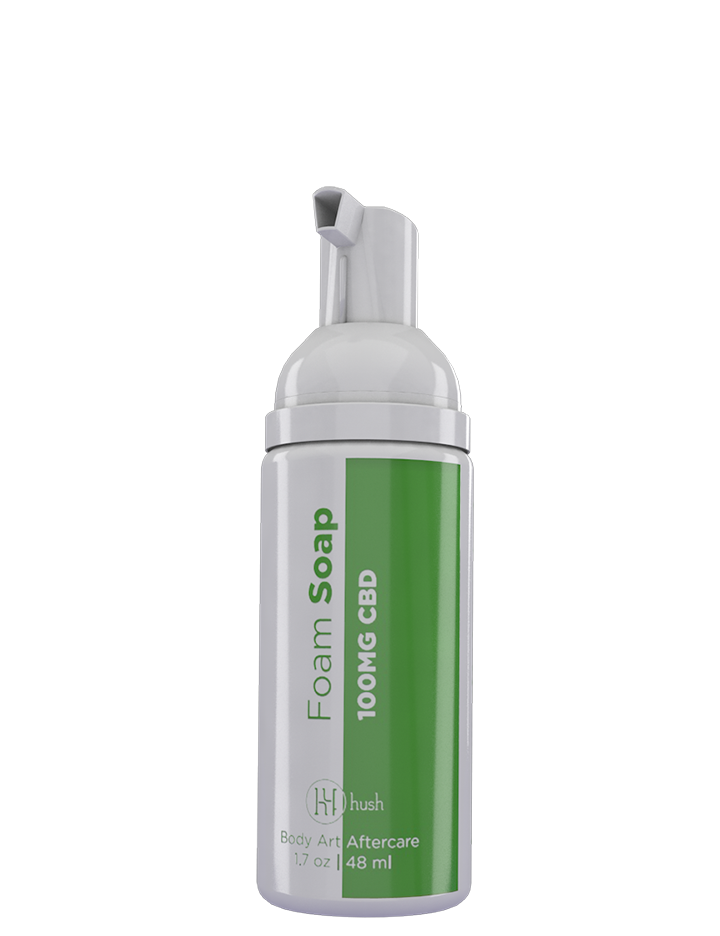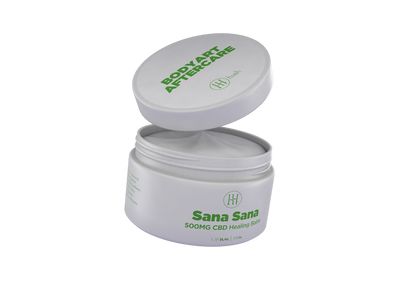
$19.99
Key Takeaways:
-
Tribal tattoos represent ancestry, identity, and rites of passage across diverse cultures. From Polynesian genealogy tattoos and Samoan rites of passage to Māori moko and Filipino warrior symbols, each style has a unique story tied to heritage, community, and spirituality.
-
The term “tribal tattoo” covers a wide range of cultural traditions worldwide, including Polynesian, Samoan, Māori, Filipino, Native American, and African practices. Each has distinct motifs, meanings, and techniques; what’s true for one culture may not apply to another.
-
Wearing tribal tattoos without understanding their meaning risks cultural appropriation. It’s important to research, work with culturally informed artists, and avoid sacred or restricted symbols; honoring the art means respecting its origins, not just its look.
Tribal tattoos have become one of the most recognizable and replicated forms of body art in the world. Their bold lines, symbolic patterns, and visually striking motifs are immediately recognizable. Beneath the aesthetic lies a much deeper story rooted in identity, heritage, and spirituality.
To truly understand tribal tattoos, we have to move beyond the surface. This isn’t just about an aesthetic. It’s about honoring centuries-old traditions, understanding cultural nuance, and recognizing the significance that these marks carry across different communities and histories.
What Exactly Are Tribal Tattoos?
The term “tribal tattoo” is often used broadly in the tattoo industry, but it originally refers to body art from Indigenous and tribal cultures around the world. These tattoos can be ceremonial, spiritual, and deeply connected to a person’s role within their community.
It’s important to note that each culture has its own unique tattooing practices, meanings, and symbols. So while “tribal” might sound like a catch-all term, there is no single tribal style. Polynesian tattoos are different from Filipino tribal tattoos, which are distinct from Native American or African tattooing traditions.
When we refer to tribal tattoos, we’re talking about ancestral tattoo traditions from cultures around the globe, each with its own language of ink and skin.
Polynesian Tradition: The Story of Your Life
Polynesian tattoos are rich in symbolism and storytelling. Each curve and line is deliberate, representing aspects of the wearer’s genealogy, social status, achievements, protection, or spiritual beliefs.
Common motifs include:
- Enata (human figures) – Representing people, ancestors, and relationships.
- Spearheads – Symbols of strength and courage.
- Ocean waves – Life, change, and connection to the sea.
- Tiki figures – Protective ancestral spirits.
Polynesian tattoos can sometimes be read in a method similar to Egyptian hieroglyphics. Each element is like a word in a larger story that explains to the world who you are and where you came from.
Samoan Tradition: Endurance and Strength
Samoan tribal tattoos, known as tatau, are among the most spiritually and culturally significant tattoo traditions in the world. These intricate patterns are a rite of passage, a symbol of identity, and a powerful expression of heritage.
In traditional Samoan culture, two primary types of tatau are worn: the Pe‘a for men and the Malu for women. The Pe‘a is a full-body tattoo that stretches from the waist to the knees, made up of intricate black patterns that often include geometric shapes, symbols of nature, and ancestral motifs. It represents strength, discipline, service to the community, and the transition into adulthood.
The Malu, worn on the thighs of women, is more delicate in design but equally meaningful, often signifying grace, leadership, and cultural responsibility. The cultural weight of tatau is immense. It is earned, lived, and respected.
Historically, it was common for young Samoans to undergo the tattooing ceremony before stepping into adult roles. Today, the tradition continues both in Samoa and among the Samoan diaspora as a proud act of cultural preservation.
Maori Tā Moko: Wearing Your Whakapapa
The Māori people of Aotearoa (New Zealand) practice tā moko, a tattooing tradition that’s unique in both design and cultural depth. Tā moko is not just a design. It is a whakapapa, or a genealogy, etched into the skin.
Māori men often wore moko on their entire faces, while women traditionally received moko kauae (chin tattoos). Each pattern is deeply personal, reflecting the individual’s tribe, status, lineage, and life story.
What’s distinctive about tā moko is its use of carving rather than puncturing the skin. Traditional methods involved chiseling the skin to create grooves that gave the tattoos a raised texture. This made tā moko not just visual, but tactile. They're stories you could literally feel.
Tā moko declined due to colonization and cultural suppression, but has experienced a powerful revival in recent decades. Modern Māori proudly reclaim moko as a symbol of cultural pride and resistance, with many choosing to receive their moko in traditional ceremonies.
Filipino Tribal Tattoos: Warriors, Protection, and Ancestral Honor
Before Spanish colonization, tattooing was widespread throughout the Philippines. Known as batok or patik, these tattoos were worn by various ethnic groups, including the Kalinga, Ifugao, and Visayan peoples.
Among the Kalinga in Northern Luzon, tattoos were traditionally worn by men who had proven themselves in battle. Each mark was a testament to bravery and honor. Women, on the other hand, were often tattooed for beauty, fertility, or spiritual protection. Patterns included centipedes, rice terraces, snakes, and geometric lines, each tied to the land and the ancestors.
One of the most famous tattoo artists in the Philippines today is Whang-od Oggay, a Kalinga elder and master of batok. As of 2025, she was alive and well at 108 years old as the oldest and last original practitioner of tribal tattooing.
She uses a thorn from a citrus tree, a bamboo stick, and natural soot-based ink. Her work has drawn global attention to the rich legacy of Filipino tattooing and inspired younger generations to reconnect with their roots.
Native American Tattooing: Spiritual Connection and Tribal Identity
While not as commonly discussed, Native American cultures also practiced tattooing long before European contact. Tattooing styles and meanings varied greatly between tribes, from the Inuit of the north to the Sioux of the Plains.
In many tribes, tattoos marked life transitions, tribal affiliation, or spiritual guidance. Some designs were meant to offer protection or invoke specific totems or animal spirits. Others were earned through acts of bravery or spiritual vision quests.
Inuit women often had facial tattoos symbolizing life roles or readiness for marriage. Lakota warriors might be tattooed with thunderbirds or arrows after battle.
Many of these practices were lost or suppressed due to colonial assimilation policies, but in recent years, Indigenous artists and communities have begun to reclaim and revive traditional tattooing as a form of cultural healing and pride.
African Tribal Tattoos: Scarification and Ritual Identity
In many African societies, the skin has long been a canvas for identity, whether through ink or scarification. While not all body markings involved pigment, they were still deeply symbolic and culturally rich.
In places like Ethiopia, Nigeria, and Sudan, body markings often indicated things like tribal belonging and life milestones like birth, achieving manhood, or marriage. In some cases, tattoos offered spiritual protection or boasted warrior status.
In the Dinka and Nuer tribes of South Sudan, for example, forehead markings were applied during initiation ceremonies to mark adulthood and tribal affiliation. While tattooing in the Western sense was less widespread in parts of Africa, the cultural parallels to tribal ink are profound. Both are visual languages of history, heritage, and belonging.
Modern Tribal Tattoos: Art or Appropriation?
Here’s where things get a little more complicated. Today, tribal style tattoos are among the most popular requests in tattoo shops around the world. The issue is that many of the designs being inked are removed from their original cultural contexts.
When traditional patterns are replicated purely for their visual appeal without understanding their meaning or origin, it can slide into cultural appropriation. Especially when sacred symbols are commodified or altered, or when people wear tribal tattoos from cultures they have no connection to.
It’s one thing to admire the artistry of Polynesian or Filipino tattoos. It’s another to wear their symbols without knowing what they mean. Or even worse, you may be getting a tattoo that contradicts its cultural message.
How To Honor the Art Responsibly
If you’re drawn to tribal tattoo styles and want to wear them respectfully, use this checklist to make sure you're not on the verge of doing something that may not sit well with the culture where the art originated.
-
Do your research – Learn about the culture, the symbolism, and the history.
-
Work with culturally informed artists – Seek tattooists who specialize in that tradition, especially those with lived cultural experience.
-
Avoid copying sacred designs – Some patterns are only meant to be worn by people of certain status, lineage, or rites of passage.
- Be transparent and intentional – Understand why you want that tattoo and be open to dialogue.
It's possible to accurately honor a culture or uphold a tradition without appropriating it for an aesthetic. Just be careful in your approach to the process.
The Universality of Tribal Tattoos
Despite their diversity, tribal tattoos around the world share some common themes, like connection to ancestry, markers of transition, symbols of power or protection, ties to nature and spirit, and even visual language passed through generations.
In a way, these tattoos are like living folklore. They remind us that across time and geography, people have always turned to the body as a canvas for memory, ritual, and belonging. That’s the real power of tribal tattoos. They are as personal as they are cultural, blending individual identity with collective tradition.
Tribal Tattoos Then and Now
A true tribal tattoo is usually performed by an elder with improvised tools and homemade ink. Sessions are usually held outdoors. This process is much more painful than a traditional tattoo, and the risk of infection is much higher.
While many people still use the traditional method, especially if they were born in the place where the method has been used for generations, most people won't go the same route. Modern tattooing requires a lot of sanitation and aftercare. Tribal tattoos are often very large with thick and heavy black ink patches.
Caring for a tribal tattoo can be quite a lot of work. Be sure you're prepared for the commitment.
Do Tribal Tattoos Hurt?
Tribal tattoos performed the traditional way hurt a lot, and they take a very long time. Modern tribal tattoos still hurt, but often not as much. You'll want to consider the density of your tribal tattoo. If you're filling up a lot of space, you're definitely going to feel it.
We're breaking a lot of traditions with modern tribal tattoos, and pain can be one of them. Numb up with HUSH tattoo numbing cream before your session. Slather a thick layer of cream on the area where you're getting your tattoo about 90 minutes before your appointment. Wrap it up with plastic wrap to keep the cream in place.
When you're ready for your session, just take the plastic off and wipe away the excess numbing cream. The discomfort will be turned down from a sharp scream to a dull roar for the next few hours.
Respecting Your Tribal Tattoo With Proper Aftercare
If you’ve chosen to honor your body with a tattoo inspired by tribal tradition, whether it's rooted in your heritage or respectfully informed by another culture, it deserves careful aftercare. One gentle, modern option that pairs beautifully with ancient ink traditions?
HUSH CBD tattoo balm. Formulated with calming botanicals and skin-soothing ingredients, our CBD tattoo balm is crafted to support skin recovery after your tattoo session. Our CBD tattoo balm is a part of our tattoo aftercare kit, which contains everything you need to care for your healing work of art.
FAQs
What does Gen Z call tribal tattoos?
Cybersigilism fuses traditional tribal tattoos with futuristic, digital patterns. Cybersigilism stands out by blending age-old symbols with modern design elements and a touch of nature to create something entirely new.
How do I choose what tattoo I want?
Choose a design that reflects something meaningful to you, like your values, beliefs, or important life events. Consider whether this meaning will remain significant as you age. You can also explore different tattoo styles (traditional, tribal, watercolor, etc.) and see what resonates with you, or find artists you like on social media.
How painful is a first tattoo?
You might feel stinging or burning when the artist outlines or details your design. If you're getting a bony spot inked, you might feel a vibrating sensation. The most common feeling, however, is a low-grade pain that's moderate enough for you to be distracted from by talking, watching TV, or listening to music.
The Bottom Line on Tribal Tattoos
Tribal tattoos are more than just bold lines and geometric patterns. They are echoes of oral traditions, rites of passage, and cultural pride. Whether you’re reconnecting with your ancestry or admiring the resilience of other cultures, tribal tattoos offer a powerful way to wear your story or to respect someone else’s.
If you choose to carry one on your skin, do so with knowledge and care. And when the needle work is done, don’t forget to show your skin some love. A soothing CBD balm might not be ancient tradition, but it's a modern ritual your tattoo will thank you for.
Sources:
Skin Stories . History of Tattoo | PBS
How the Samoan Tattoo Survived Colonialism | Sapiens
Beyond skin-deep: the politics of tattooing | The Maastricht Diplomat
SKINDIGENOUS / Philippines - Whang Od Oggay and Grace Palica | PBS Hawai‘i





